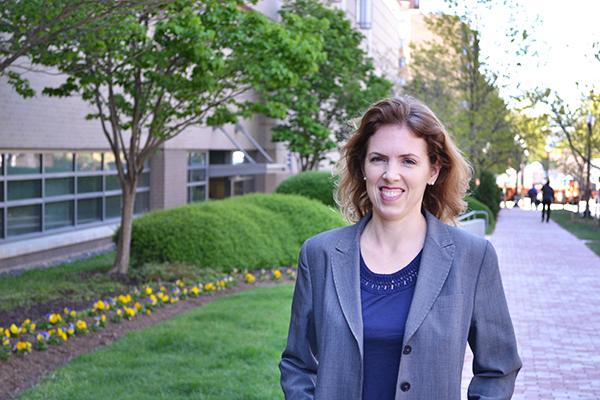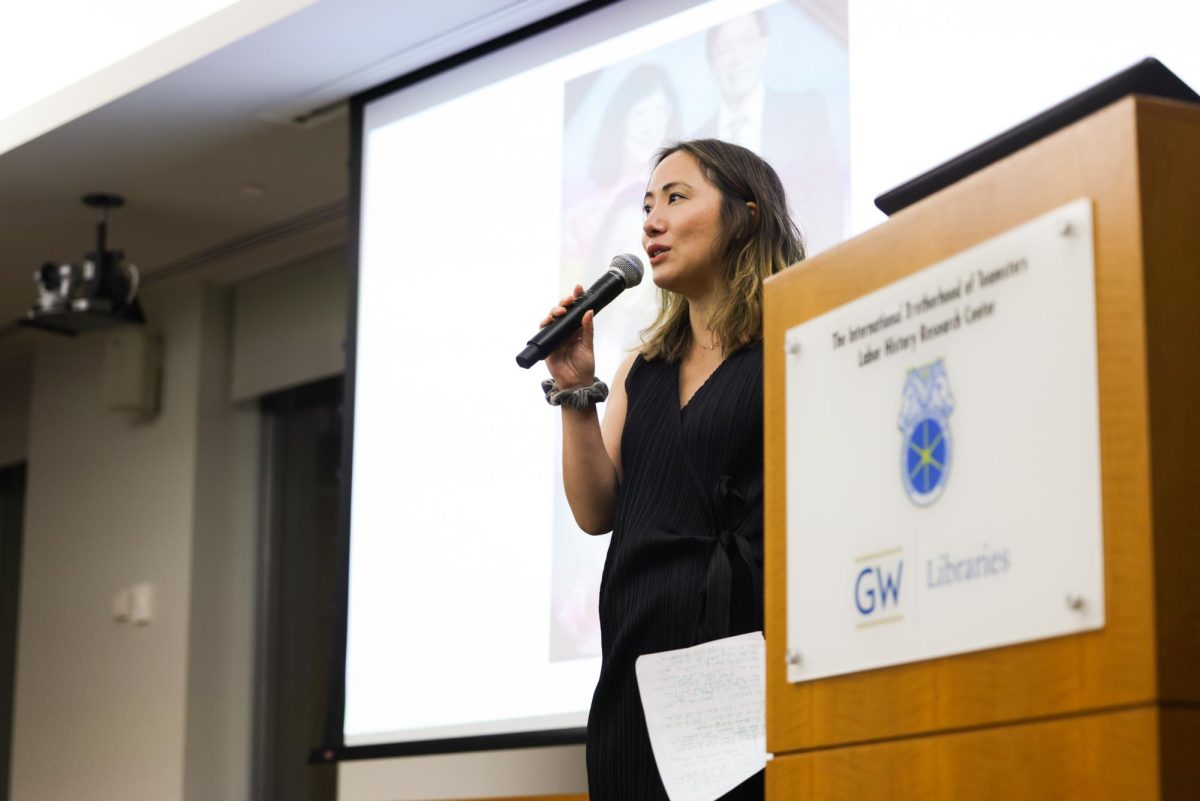While in Bangladesh filming a Showtime documentary series highlighting the effects of climate change, associate professor Sabrina McCormick came face-to-face with an elderly couple living in a tent, forced off their land due to river erosion.
“I immediately felt like, oh my God, this is the face of climate change. I am meeting those people who are experiencing what we as Americans have done, basically. So it was super impactful for me,” McCormick said.
A climate change specialist in the Milken Institute School of Public Health, Sabrina McCormick serves as the producer and associate producer for two installments of the nine-part Showtime series, “Years of Living Dangerously,” which premiered earlier this month.
With executive producers James Cameron, Arnold Schwarzenegger and Jerry Weintraub, the show uses celebrity correspondents to follow the real-life stories of communities around the world affected by climate change. For McCormick, this meant applying her knowledge of climate change to a story on heat waves that featured Matt Damon and a story on Bangladesh featuring Michael C. Hall.
The documentary-style series features real families dealing with the disastrous impacts of climate change, such as wheat farmers in Plainview, Texas who were impoverished by an unending drought. This film style captures the interplay between humans and the environment by putting a human face on the impacts of climate change.
“That’s really what it does the best, is to really make these stories about climate change very real and very human,” McCormick said.
Though she received her Ph.D in sociology from Brown, McCormick remembers spending hours making films at the Rhode Island School of Design, which was just down the street from her campus. There, McCormick produced the first films in her now extensive repertoire of climate-related media, including the short film “Burned Out,” which chronicles a couple who lost their home to the biggest wildfire in Los Angeles history.
“I think film is great in this particular point in history for climate change because telling a story about something that’s so abstract as climate change is much more effective at getting people to understand it, to pay attention to it, to engage in it, then say, numbers or abstractly talking about polar bears,” she said.
Yet what makes this series different from anything McCormick has done before is the narrative aspect of the film. Rather than throw figures and statistics at the viewer, the docu-series features real stories of people from around the world, creating a film that is both picturesque and dauntingly accurate.
“The vision of the executive producers was such that they’re really trying to take very cinematic, almost narrative-style approach to filming in a documentary world. And that is really unusual,” she said.
The obstacles that reporters and documentary producers must overcome to communicate environmental issues are huge, said Frank Sesno, director of the School of Media and Public Affairs and creator of Planet Forward, which is unaffiliated with the Showtime project but also highlights innovations in the issues of environmental sustainability through web and television projects.
Not only is climate change a global issue, but it is also what Senso calls a “slow-motion disaster,” meaning that it operates so slowly that most people either don’t notice or don’t care.
“How do you tell the story with the seriousness that it needs, without sensationalizing it so that people dismiss it? It’s a fine line. And that’s why I think all these other kinds of creative storytelling are in order,” he said.
“Years of Living Dangerously” airs Sundays on Showtime at 10 p.m. The first episode can be viewed for free on the series’ website.






